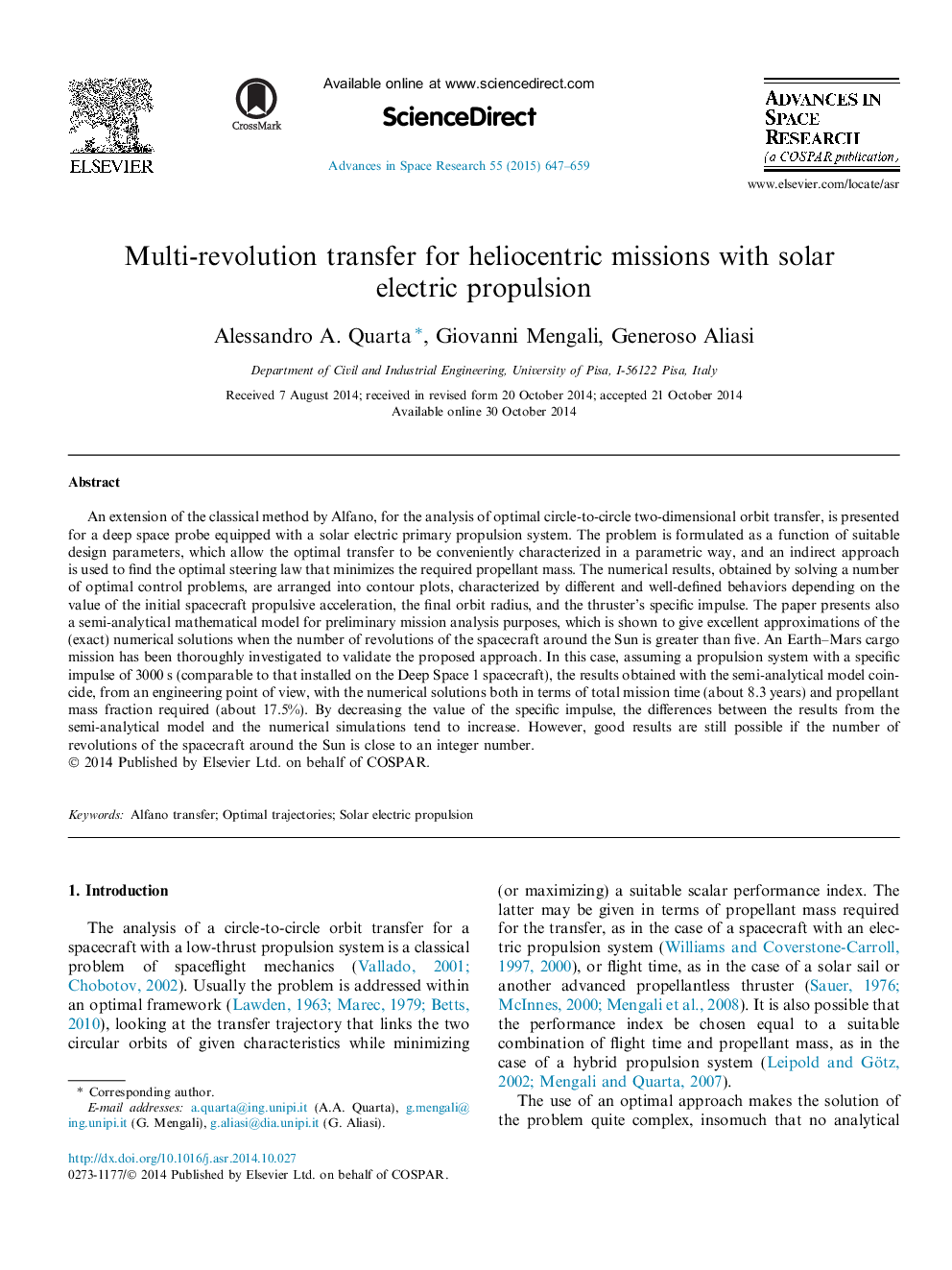| Article ID | Journal | Published Year | Pages | File Type |
|---|---|---|---|---|
| 1764307 | Advances in Space Research | 2015 | 13 Pages |
•This paper presents an extension of the method by Alfano for heliocentric transfer.•A circle-to-circle, coplanar, orbit transfer for a SEP spacecraft is analyzed.•The numerical results are arranged into contour plots in a parametric way.•A semi-analytical model for preliminary mission analysis purposes is also discussed.
An extension of the classical method by Alfano, for the analysis of optimal circle-to-circle two-dimensional orbit transfer, is presented for a deep space probe equipped with a solar electric primary propulsion system. The problem is formulated as a function of suitable design parameters, which allow the optimal transfer to be conveniently characterized in a parametric way, and an indirect approach is used to find the optimal steering law that minimizes the required propellant mass. The numerical results, obtained by solving a number of optimal control problems, are arranged into contour plots, characterized by different and well-defined behaviors depending on the value of the initial spacecraft propulsive acceleration, the final orbit radius, and the thruster’s specific impulse. The paper presents also a semi-analytical mathematical model for preliminary mission analysis purposes, which is shown to give excellent approximations of the (exact) numerical solutions when the number of revolutions of the spacecraft around the Sun is greater than five. An Earth–Mars cargo mission has been thoroughly investigated to validate the proposed approach. In this case, assuming a propulsion system with a specific impulse of 3000 s (comparable to that installed on the Deep Space 1 spacecraft), the results obtained with the semi-analytical model coincide, from an engineering point of view, with the numerical solutions both in terms of total mission time (about 8.3 years) and propellant mass fraction required (about 17.5%). By decreasing the value of the specific impulse, the differences between the results from the semi-analytical model and the numerical simulations tend to increase. However, good results are still possible if the number of revolutions of the spacecraft around the Sun is close to an integer number.
